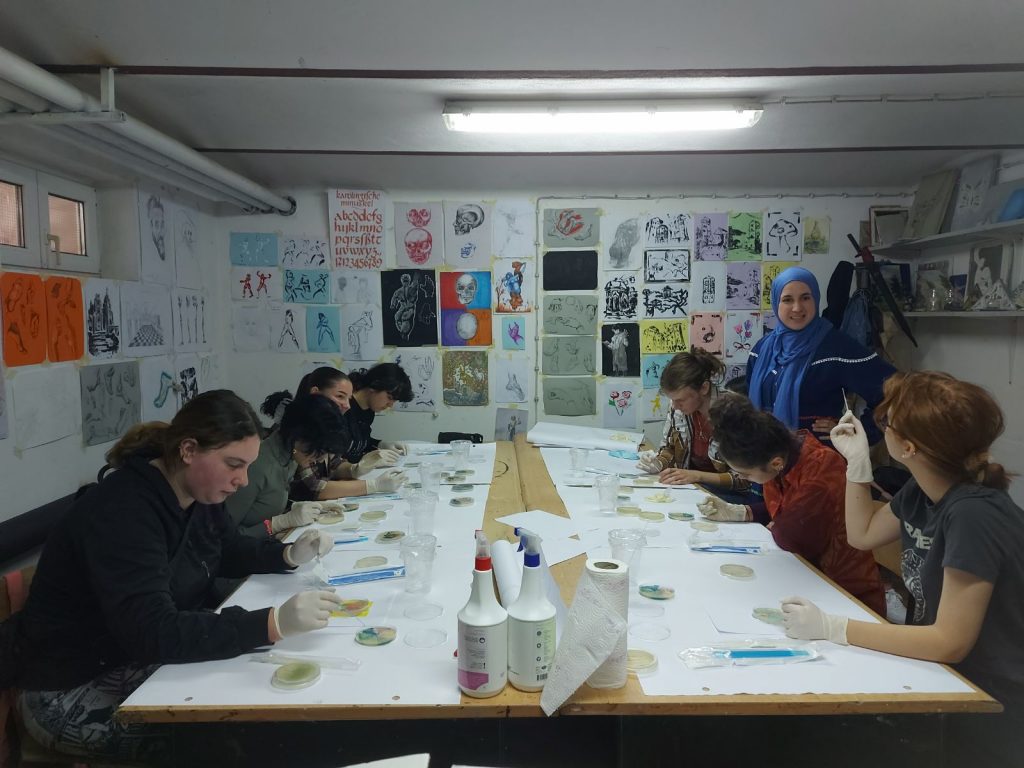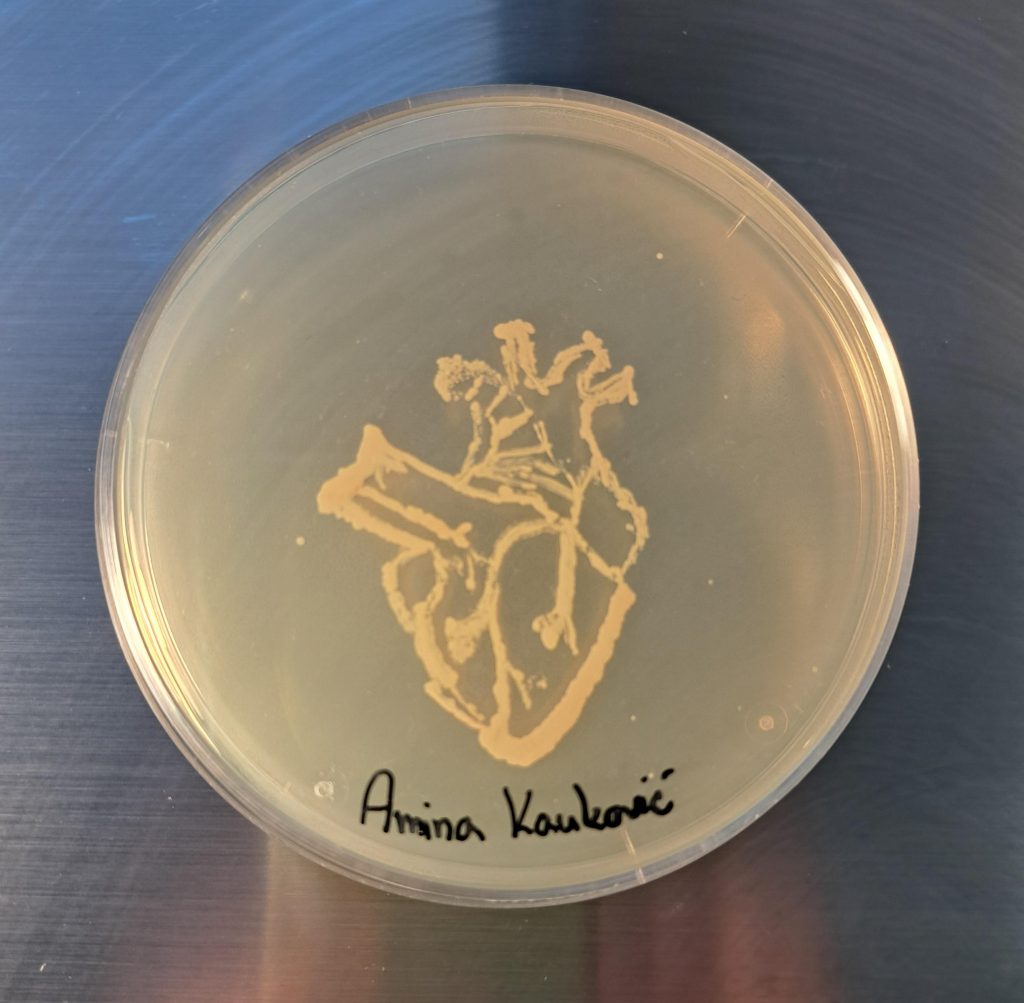On May 13th and 16th, 2024, MCAA Western Balkans Chapter, represented by Samira Smajlović (onsite) in collaboration with Laboratory Diagnostics Institute dr. Dedić represented by Kanita Dedić, MD (specialist) and Harisa Šido- Ružnić organized and conducted two Agar art workshops with 2nd and 3rd year high school students, from the Medical and Arts School in Bihać, respectively. The total number of people participating and reached onsite was around 50.
The aim of this activity was to inspire students’ creativity and design thinking but also to help them understand foundational concepts of microbiology through art. Students were provided with 9 cm diameter Petri dishes filled with a nutrient- rich UTI chromogenic medium on which bacterial colony colour can be differentiated and which was, in that sense, used as a canvas for painting. By performing simple actions using two types of inoculation loops together with a palette of six bacterial strains, high school students were painting Petri dishes. The magic lay in the fact that the paintings were visible only after 24 hours incubation at 37 degrees at the Institute’s laboratories. The idea was to demonstrate an unforgettable collaboration of microbiology and art, while directly engaging the students and making them curious about the scientific work and careers in science and research.
It was an excellent opportunity to exchange knowledge and see a different side of biology. In addition to the painting, they were required to give a brief description of their work and the message it is supposed to convey. Medical school motives were around International Nurses Day- the importance of this occupation- relevant for the student’s future themselves, especially for the women, but also underlining the importance of this role in the whole society. And the Arts school painted on the topic of “The invisible guardians on Earth” with a focus on non-pathogenic bacteria and their positive role in the world thereby marking the International Day of Biodiversity. The intention here was to help eliminate the prejudices that society has against bacteria and viruses. After completion of the activities, images of the day were chosen for each two days of activities (as winners of the competitions) and the best works were rewarded. The winners were chosen based on the creativity, originality, and quality of the design of their artwork, as well as the scientific accuracy of the descriptions and their ability to reach the public. The competition highlighted amazing things we can do with science and a little bit of creativity.














